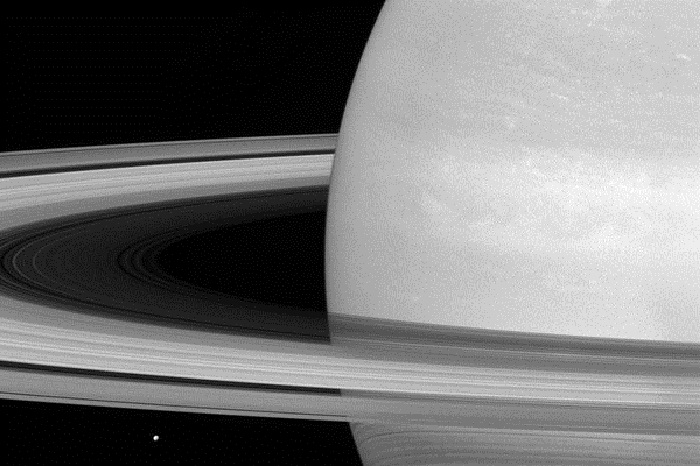Dust drifts through space from beyond the Kuiper Belt and hits Saturn’s rings. The older a ring is, therefore, the more dust it will have time to collect. And scientists can analyze the dust to figure out how old the ring is.
“Think of an unused desk in an unused room,” Ms. Zhang explained. “If the dust is thick on the desk’s top, then the desk has been sitting there a long time. The same is true of the C ring, and in this case, the dust – in terms of the age of the solar system – has not been here a long time.”
Dust comes from the Kuiper Belt, which is past Neptune. It collides with Saturn’s rings, and sticks to them. Zhang and her fellow researchers believe that the C ring has been “continuously polluted” by these space dust particles.
Ice – which makes up the bulk of the ring – doesn’t give off much heat. But the space dust particles, known as micrometeoroids, contain silicates and have a thermal emissions signature.
When instruments like Cassini’s microwave passive radiometer measure a ring’s thermal emissions, dustier rings will have higher readings. Low thermal emissions indicate that a ring is not contaminated by much dust – and so may not have been there for very long.
In the case of the C ring, the researchers say it may be just 100 million years old – much younger than previously thought. Their study will be published in the Jan. 1, 2017, issue of the journal Icarus.
The world may learn more about Saturn’s rings as the Cassini mission enters its final year. On Sunday, Cassini – which has been touring the planet Saturn, its rings, and moons, since arriving in 2004 – took its first dive through Saturn’s rings.
The first images are in, mapping the planet from high above the northern hemisphere. Future photos will get some of the closest-ever views of Saturn’s rings and small moons.
“Let these images – and those to come – remind you that we’ve lived a bold and daring adventure around the solar system’s most magnificent planet,” said Carolyn Porco, Cassini imaging team lead at Space Science Institute in Boulder, Colo., in a press release.
Another 19 “ring-skimming” orbits are planned, according to NASA. These orbits will take more photos, perform different scans, and even try to sample particles from the rings, the agency said.
/Csmonitor/
More about:
















































